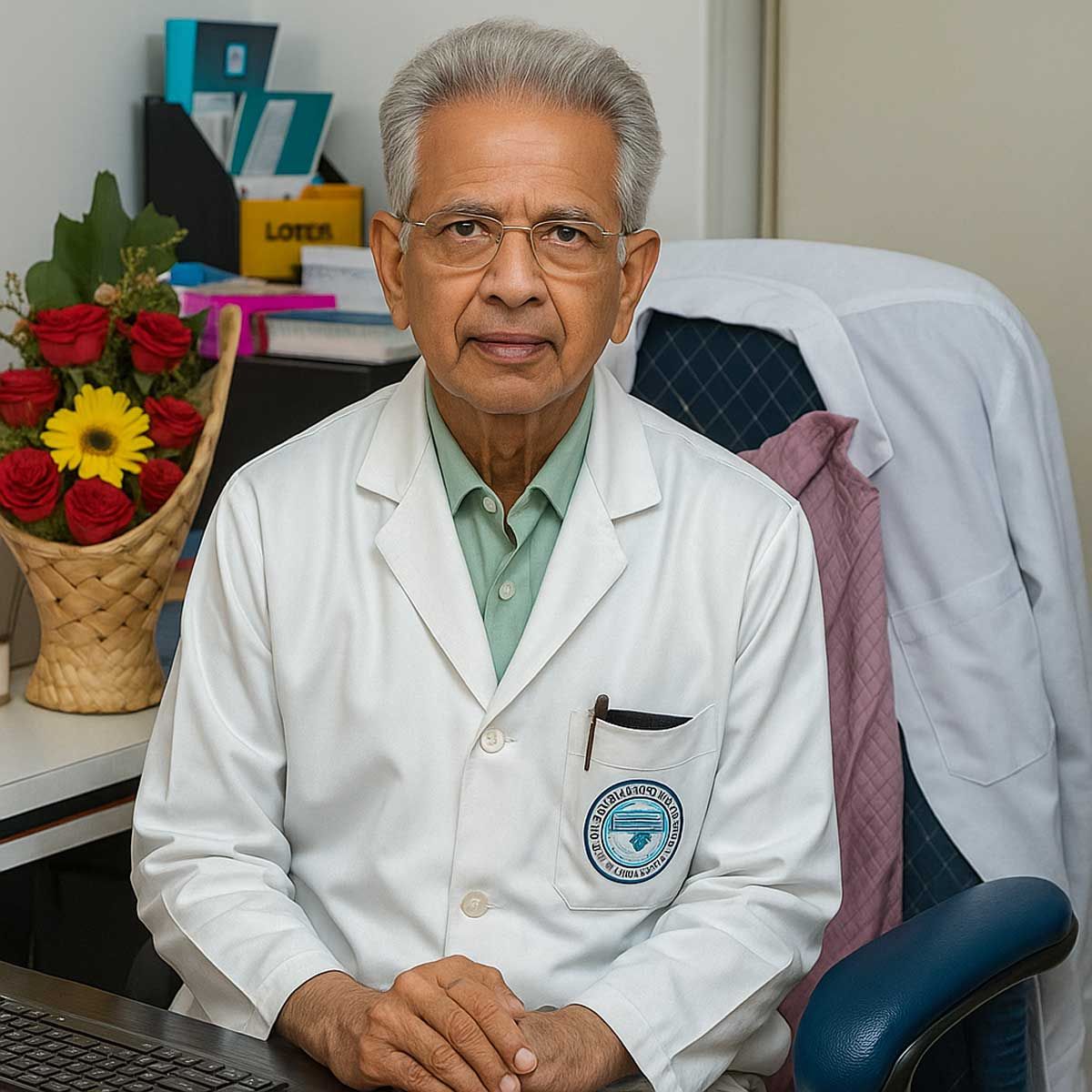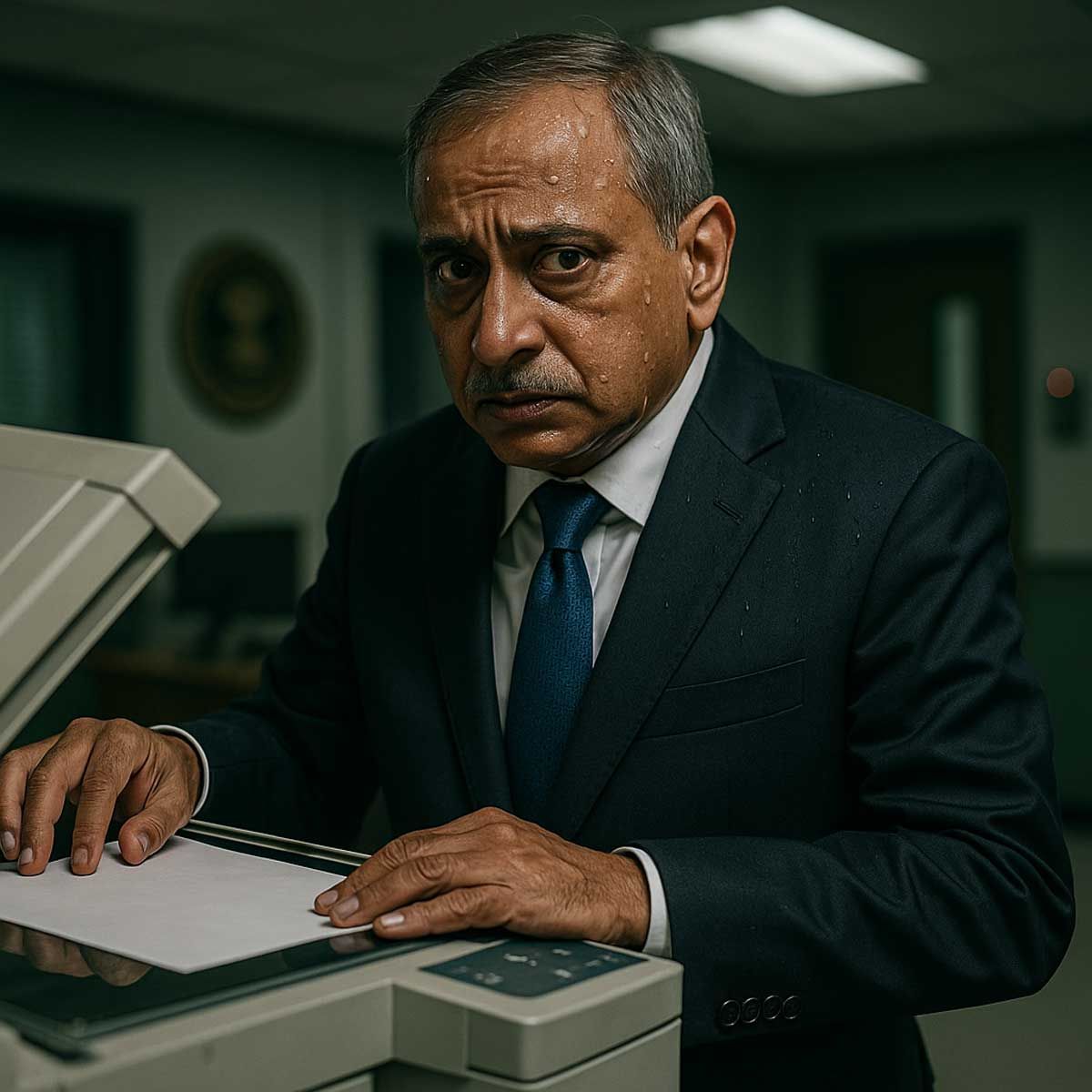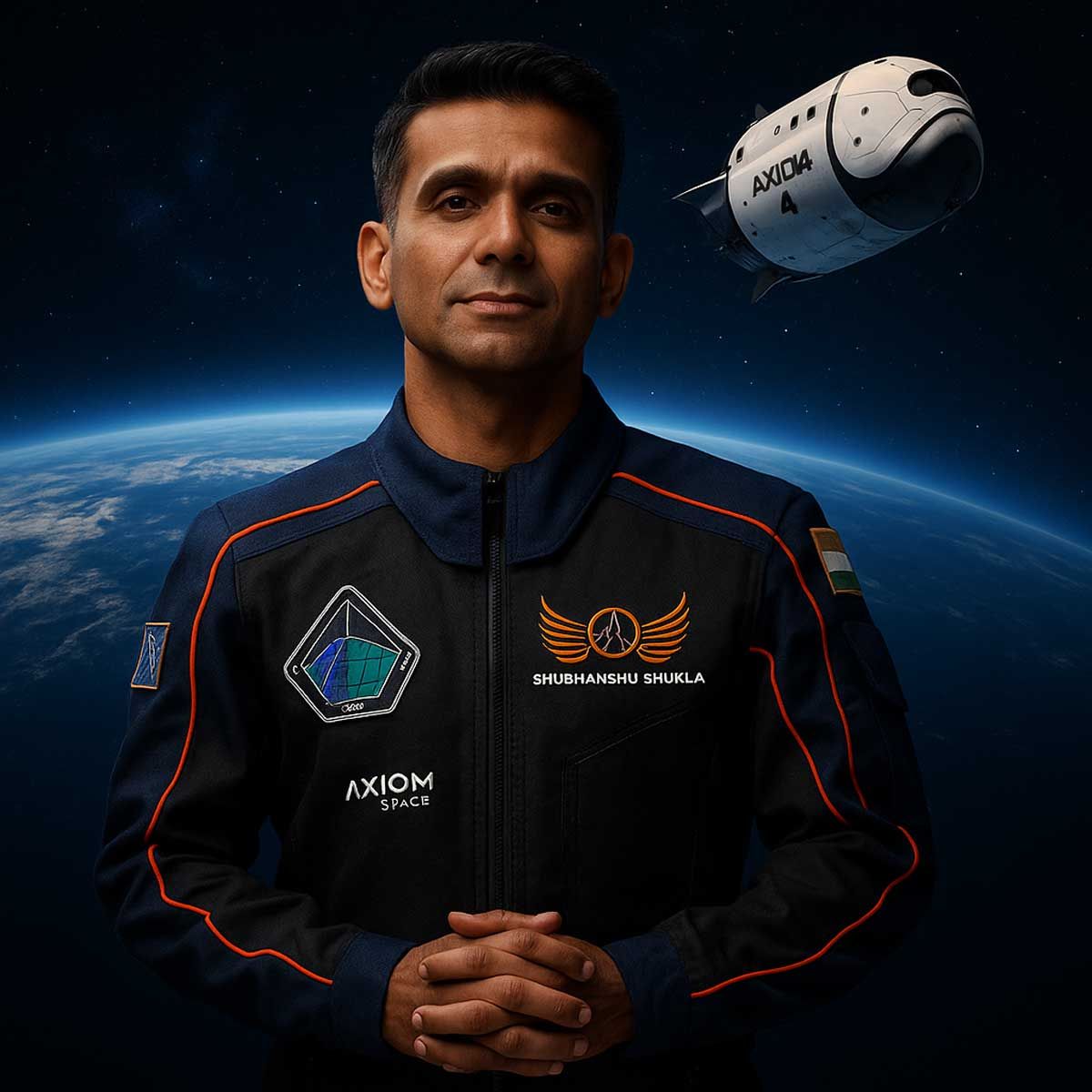More Coverage
Twitter Coverage
Satyaagrah
Written on
Satyaagrah
Written on
Satyaagrah
Written on
Satyaagrah
Written on
Satyaagrah
Written on
JOIN SATYAAGRAH SOCIAL MEDIA
"Seeing a miracle will inspire you, but knowing you are a miracle will change you": India gearing up to launch its own manned space mission, ‘Gaganyaan’ will make India fourth country to send humans into space, a step towards the 'Grand Space Ambitions'

“Upar se Bharat kaisa dikhta hai aapko?” When Former Indian Prime Minister Indira Gandhi asked Wing Commander Rakesh Sharma, who was a part of the Soviet Interkosmos programme, he replied, “I can say without any hesitation, saare jahaan se accha.”
|
When Rakesh Sharma ventured into space on April 3, 1984, it was a moment of pride for the whole nation—Sharma became the first Indian to travel to space. However, he was onboard the Soviet Soyuz T-11 spacecraft with Soviet cosmonauts and was participating in a Soviet space expedition.
Now, more than three decades later, India is gearing up to launch its own manned space mission. Announced by Prime Minister Narendra Modi in 2018, ‘Gaganyaan’ will make India only the fourth country to send humans into space. So far, besides Russia, only the US and China have managed to successfully launch their human-crewed space missions.
Gaganyaan will not only be a significant feat for India’s space ambitions but will further pave the way for future space missions for India.
|
Gaganyaan
Commissioned in 2007, the mission is expected to be completed in 2024 with a budget of around INR 10,000 crores. The spacecraft, called Gaganyaan, will carry three astronauts to the Low Earth Orbit (LEO) at a distance of 400 kilometres from Earth.
Prior to that, two uncrewed missions are also being planned. The first uncrewed flight, called ‘Gaganyaan 1’, is scheduled to launch next year on a GSLV Mark III rocket.
The spacecraft will be launched from Satish Dhawan Space Centre, Srihariikota. Stakeholders involved in the programme include the Indian Armed Forces, DRDO labs, Indian Industries, Premier Academic and Research institutions and CSIR labs.
“We are looking at a capsule that will first go in the LEO, orbit the Earth for a few hours, and come back. This will be followed by a docking experiment where two or more spacecraft will demonstrate docking, and will merge with one another to form a slightly bigger superstructure,” Dr Chaitanya Giri, Space Policy and Diplomacy Consultant told AIM.
The main objective of the Gaganyaan Programme is to achieve autonomy in access to space—providing both tangible and intangible benefits to the development of the nation with maximal industry and academia participation and collaboration, ISRO said.
“The Gaganyaan programme would lay the foundation for a sustained and affordable human and robotic programme for India in the long run. This will also create a broader academia and industry participation and partnership in taking up the developmental and R&D activities.”
“This will leverage India’s position strategically in the global arena and be a potent international policy tool. It will generate ample scope for employment generation and human resource development in advanced science and R&D activities,” Anil Prakash, director general at Satcom Industry Association (SIA) India, told AIM.
|
Parachute based Deceleration system for Crew module
For Gaganyaan Crew module, the Parachute system consists of a totally of 10 no. of parachutes. In flight, the parachute sequence starts with deployment of 2 Nos. of Apex cover separation parachutes (protection cover for the Crew Module Parachute compartment) followed by 2 Nos. of Drogue parachute deployment to stabilise & bring down the velocity.
Upon Drogue parachute release, 3 Nos. of Pilot chute will be used to extract 3 Nos. of Main parachute individually, to reduce the speed of the Crew module to safe levels during its landing. Two of the three main chutes are sufficient to land the astronauts on earth, and the third is redundant. Each parachute's performance must be evaluated by complex testing methods using Rail Track Rocket Sled (RTRS) tests for smaller Parachutes and Aircraft/ Helicopters for the Main parachutes.
The Integrated Main Parachute Airdrop Test simulated the case when one Main parachute failed to open and it is the first in a series of tests planned to simulate different failure conditions of the parachute system before it is deemed qualified to be used in the first human spaceflight mission. In this test, a 5-ton dummy mass, equivalent to the Crew module mass, was taken to an altitude of 2.5 kilometres and dropped using the Indian Air force’s IL-76 aircraft.
Two small pyro-based mortar-deployed pilot parachutes, then pulled the Main parachutes. The fully inflated Main parachutes reduced the payload speed to a safe landing speed as the entire sequence lasted about 2-3 minutes and the payload mass landed softly on the ground.
The design and development of the Parachute based Deceleration system for Crew module is a joint venture between Indian Space Research Organisation (ISRO) and the Defence Research and Development Organization (DRDO) and with this test, a significant milestone toward realizing the nation's ambitious Gaganyaan project is achieved with the active coordination between the country’s premier agencies, namely ISRO, DRDO, the Indian air force, and the Indian Army.
|
Space Tourism
Union Minister Dr Jitendra Singh, while speaking in the Rajya Sabha, said that ISRO is developing indigenous technological capabilities for space tourism. Gaganyaan could possibly open the doors for space tourism in India. Aakash Porwal, Founder of Space Aura, also concurs with this belief.
“Space Tourism can potentially generate several million dollars in revenue. With a good track record of ISRO’s successful launches and accomplishing the Gaganyaan mission, we can build confidence and attract significant space tourists from India and globally.”
“India can focus on its strengths by providing exceptionally curated experiences to space tourists through a fusion of Indian culture and space travel and enable a profound individual experience during this epic journey. I believe India can be amongst the top destinations for space tourism globally,” Porwal told AIM.
Prakash further added that India is known for its cost-effective missions to Moon and Mars, and many countries are seeking India over the US and EU for launch rideshare and satellite operations.
Giri, on the other hand, is sceptical when it comes to leisure tourism. “You don’t have that many ultra-rich people ready to go into space and spend money, and many of them do not have the necessary health parameters,” he said. However, once India has its space station running, it will open the doors for business tourism.
“Space tourism will actually be space business tourism where companies in the electronics or pharmaceutical industries will want to avail facilities on the space station to carry out their experiments, which would help them manufacture novel products and which cannot be manufactured or researched here on Earth because they require some sort of microgravity or microgravity conditions, weather conditions and more,” he added.
India’s space aspiration
Gaganyaan will also pave the way for more futuristic space projects, most notably India’s plan to build its space station by 2030.
“Gaganyaan is part of a series of projects that will happen in the next 15–20 years, where India will want to have sustained human presence in the LEO Orbit,” Giri said.
In 2019, former chairman of ISRO, K. Sivan said that India aims to have a separate space station for its purposes and aspires to launch a small module for microgravity experiments.
The space station will be placed in orbit 400 kilometres from Earth and will weigh around 20 tonnes. Astronauts would be able to stay at the station for around 15–20 days.
ISRO is also working on future satellite missions like Aditya L-1, Chandrayaan-3 mission, Gaganyaan mission, Venus Orbiter Mission, and NISAR mission, among several others. “The upcoming missions will enhance the technological capabilities of the nation and will make a significant contribution to scientific research and development,” Prakash said.
Besides, India’s space economy is also expected to grow significantly in the coming years. According to a joint report by EY and the Indian Space Association (ISpA), the Indian space economy is expected to reach USD 13 billion by 2025.
“India is on the path to become the third largest economy on the planet. This means India will have the economic might to carry out several missions that were not possible earlier. So, our investment in the space sector will grow tremendously along with our ability to drive economic benefit out of it. I assume that by 2047, almost one-third of the global space economy will be run by India,” Giri said.
Prakash likewise believes India is sure to secure a leading part in the world’s most elite space clubs alongside Russia, US, and China by 2050: “According to Dr Somanath, the current chairman of ISRO, India—with the right push from the government and private sector, the Space Industry in India can garner a 10% market share at USD 50 billion by 2025, a 30% market share by 2035, and 50% market share at USD.75 trillion by 2047.”
“Space missions will infuse the entire ecosystem. Industry and academia will have a major role to play in such missions.”
“India’s greatest advantage is the relatively low cost of its scientific manpower and missions, the burgeoning aerospace industry and for being one of the largest defence industries in the world,” Prakash concluded.
References:
 Support Us
Support Us
Satyagraha was born from the heart of our land, with an undying aim to unveil the true essence of Bharat. It seeks to illuminate the hidden tales of our valiant freedom fighters and the rich chronicles that haven't yet sung their complete melody in the mainstream.
While platforms like NDTV and 'The Wire' effortlessly garner funds under the banner of safeguarding democracy, we at Satyagraha walk a different path. Our strength and resonance come from you. In this journey to weave a stronger Bharat, every little contribution amplifies our voice. Let's come together, contribute as you can, and champion the true spirit of our nation.
 |  |  |
| ICICI Bank of Satyaagrah | Razorpay Bank of Satyaagrah | PayPal Bank of Satyaagrah - For International Payments |
If all above doesn't work, then try the LINK below:
Please share the article on other platforms
DISCLAIMER: The author is solely responsible for the views expressed in this article. The author carries the responsibility for citing and/or licensing of images utilized within the text. The website also frequently uses non-commercial images for representational purposes only in line with the article. We are not responsible for the authenticity of such images. If some images have a copyright issue, we request the person/entity to contact us at This email address is being protected from spambots. You need JavaScript enabled to view it. and we will take the necessary actions to resolve the issue.
Related Articles
- "Beyond gravity, within safety": ISRO's Gaganyaan mission progresses with Drogue Parachute tests, prioritizing astronaut safety, aiming to send a crew to 400 km orbit for 3 days, it utilizes Human Rated LVM3 and comprehensive training in Bengaluru
- "Reach high, for stars lie hidden in your soul": Marking an historic feat, ISRO successfully launched 7 Singaporean satellites, each showcasing technological prowess, another milestone of India-Singapore partnership and the future of space exploration
- "Historic launch of Chandrayaan-3": A lunar mission set to make India the fourth nation to land on the moon, encompassing technological marvel, scientific discovery, and national pride, carving out India's place in the annals of space exploration
- After 41 years, India returns to space as IAF’s Group Captain Shubhanshu Shukla pilots Axiom-4 to ISS on June 10, leading 7 Indian experiments and paving the way for Gaganyaan, a future space station by 2035, and a Moon landing by 2040
- "And the winds and the waves are always on the side of the ablest navigators": ISRO successfully launched GSLV-F12/NVS-01 Mission from SDSC-SHAR, Sriharikota, NVS-01 first of the India's second-generation NavIC satellites that accompany enhanced features
- "There is no law except the law that there is no law": Samudrayaan with Matsya 6000 is set to unlock the ocean's enigmatic heart, heralding a new era in harnessing marine resources for a sustainable future symbolizing a big leap in deep-sea exploration
- ISRO successfully tested the Gaganyaan Service Module Propulsion System (SMPS) on July 19, 2023 at ISRO Propulsion Complex (IPRC) , Mahendragiri
- India's audacious tryst with the cosmos continues as Chandrayaan-3 flawlessly kisses the Moon's South Pole, a precise Nataraja dance of science, ambition, and national pride, this milestone heralds a new dawn in lunar exploration, Bravo ISRO 🌒🚀
- "Story of India’s herculean scuffle to get the Cryogenic Engine": India's heavy lift ambitions and ultra-low-cost model could put the likes of NASA out of business, an eventuality that the USA tried to delay India’s space program as long as it can
- "Cyberspace undeniably reflects some form of geography": Ashwini Vaishnaw launched "Bharat 6G Alliance" for better collaboration between Govt, industry and academia in developing indigenous 6G products, India already has 200+ patents for 6G
- "Three things cannot long be hidden: the sun, the moon, and the truth": It was not Isaac Newton but Rishi Kanad who first discovered "Laws of Motion" at least 2000 years before Newton in his Vaishesika Sutras, was also known as "Father of Atomic Theory"
- “Genius is never understood in its own time”: Do you know when you put your debit card in ATM and ask for money, machine arranges the money before giving it to you using Srinivasa Ramanujan’s partition theory, celebrated as National Mathematics Day
- “Is artificial intelligence less than our intelligence?”: In a magnificent leap forward, behold the unveiling of India's first autonomous wonder vehicle amidst the remarkable symphony of innovation, the zPod, by the Bengaluru-based startup Minus Zero
- "Research is formalized curiosity. It is poking and prying with a purpose": Full-sized digital scan of the Titanic, which lies 3,800 m (12,500 ft) down in the Atlantic, has been created using deep-sea mapping, providing a unique 3D view of the entire ship
- "Varahamihira - ancient Astrologer, Astronomer and Mathematician": His encyclopaedic knowledge and lively presentation of subjects, as dry as astronomy, made him a celebrated figure, discovered trigonometric formulas and Pascal’s triangle




























